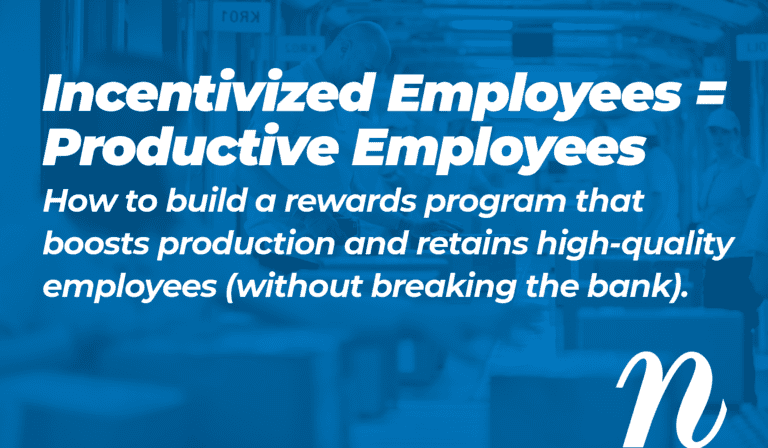10 Common Outsourcing Ailments in Distribution & Light Manufacturing
For logistics, distribution, and light manufacturing operations, outsourcing labor is often a crucial factor in success. It can make the difference between ending the quarter in the black, or in the red.
Many times, outsourcing is also the most manageable way to acquire and utilize a productive workforce. Letting someone else handle the recruiting and supervision has a dramatic impact on your internal resources of time and energy.
But just because outsourcing is desirable doesn’t mean it’s perfect. In fact, there are several common issues that accompany an outsourced labor solution. The University of Tennessee has identified some of those typical problems. As experts in finding and managing top-quality workforces for organizations in a wide variety of applications, nGROUP has witnessed some of these very issues.
- Penny Wise, Pound Foolish
The most common reason for using outsourced labor is cost. But the pursuit of lower and lower costs can itself become a disturbing problem. As you bid out your work, a lower bidder will almost always become available. If you are pursuing every last penny in savings, you will find yourself constantly switching from one provider to another. This process quickly becomes exhausting, and you’ll find yourself losing margin in the frequent transitions.
- The Outsourcing Paradox
Relying on outsourced labor solutions too much can actually cause a serious paradox to occur. This happens when an operation turns to their labor provider for the “perfect system”: a complete set of processes, frequencies, and measurements to get the job done. It looks amazing on paper. The problem is outsourced labor providers are not experts in your industry. The “perfect system” is, in fact, only perfect from the labor provider’s perspective, not necessarily from yours. That results in performance problems, productivity issues, and headaches galore. (At nGROUP, we’ve set out to remedy this issue. Details below.)
- The Activity Trap
Often, outsourced labor solutions are facilitated on a transaction basis. That is, the labor provider gets paid for the amount of work done, regardless of whether that work actually needs to be done. Unsurprisingly, that kind of relationship can quickly turn sour when the labor provider keeps charging for “activities” that don’t actually benefit your operation. Just because work is getting done, doesn’t mean it’s the work you need done. Avoiding this trap is one of many reasons why nGROUP’s unique service model is so attractive to our clients.
- The Junkyard Dog Factor
The introduction of outsourced labor often means the reduction of an internal team. When they realize their jobs might be about to drastically change (or disappear altogether), employees naturally can become defensive. They hunker down and attempt to mark out their “territory” within the organization. Even when those employees are asked to stay on and manage the new outsourced labor provider, there is often still a great deal of tension between internal teams and outside providers. Without a true partnership, things can be tense.
- The Honeymoon Effect
At the beginning, sometimes everything is rosy. The new outsourced labor provider comes into a situation, brings their people onboard, and jumps through all sorts of hoops to make their new client happy. The client, of course, is ecstatic with lower costs. However, trouble arises if this sense of well-being becomes a sense of complacency. Labor providers aren’t necessarily incentivized to go beyond their original Service Level Agreements, and a client may suddenly realize they’re being left behind as performance increases in their industry. The honeymoon effect blinded them until it was too late.
- Sandbagging
Sandbagging is the practice of an outsourced labor provider slowly introducing cost savings, rather than establishing the maximum savings up front. Setting forth the absolute best cost figures is, of course, to the benefit of the operation that is bringing in outsourced labor. The provider, however, often decides to sandbag by only drip-feeding cost savings in increments. By doing this, the provider thinks they can lead their client along, only offering the “low hanging fruit” of savings opportunities, never trying to achieve maximum savings all at once.
- The Zero-Sum Game
Unfortunately, many labor providers view their services as a zero-sum game. This means they believe in order to achieve something beneficial, another group must lose something of value. That kind of worldview turns every decision into a potential conflict. However, we know it doesn’t have to work that way. John Nash’s Nobel Prize-winning work on game theory established how everyone (and all organizations) benefit more from working together than they do from working separately. Unfortunately, it seems many outsourced labor providers don’t know this.
- Driving Blind Disease
This phenomenon occurs when an organization may not be fully prepared for the outsourced labor agreement they just entered. The worst examples of this are when no real governance has been issued to monitor the performance of the relationship. In fact, the Aberdeen Group has produced research that shows how achieved savings differ dramatically from negotiated savings.
- Measurement Minutiae
The affliction known as Measurement Minutiae manifests when an organization tries to measure everything. nGROUP experts have encountered spreadsheets that factor more than 100 different metrics. This kind of over-the-top measurement usually accompanies The Junkyard Dog Factor, as well as The Activity Trap. If your operation starts measuring an increasing number of metrics, make sure you actually trust your labor provider to do their job well. And make sure you don’t get stuck in analysis paralysis. The only data that matters is actionable data – where you know how to apply it to make smart changes to your operations. This is what we at nGROUP love to bring to the surface for our clients.
- The Power of NOT Doing
The saddest of all ailments is the one we call The Power of NOT Doing. This happens when a company falls into the trap of establishing measures for the sake of measures, without thinking through how those measures will be used to manage the business. We’ve all heard the old adage that “You can’t manage what you don’t measure.” But if you don’t use your measures to make improvements, you should not expect results. Similar to number 9 above, Measurement Minutiae, data is only useful if you can act on it to optimize your results.
These 10 common outsourcing ailments are all too, well, common. Traditional temp labor providers want you to fall into The Activity Trap. They don’t mind Sandbagging to string you along, and they view business as a Zero-Sum Game. It’s no wonder these traditional temp labor providers are often the cause of massive labor headaches.
nGROUP cures massive labor headaches. We serve clients with recruiting and labor management services that are dedicated to making your operation more productive and profitable. We’ve seen the frustration and stress on the faces of those who’ve worked with normal temp labor providers. That’s why we do things differently:
- We offer cost-saving pricing models that only compensate us for actual production, not just “work.”
- We invest in training and incentives for our team members, keeping them engaged and motivated.
- We see our clients as true partners, meaning we have skin in the game, too. We only succeed when you succeed.
To read more about nGROUP’s staffing and recruiting services, go here.







